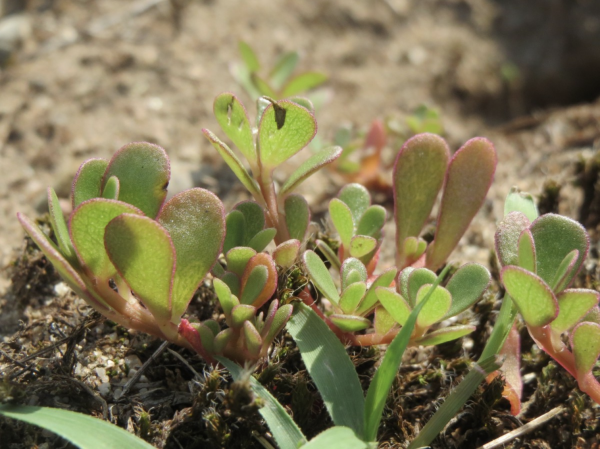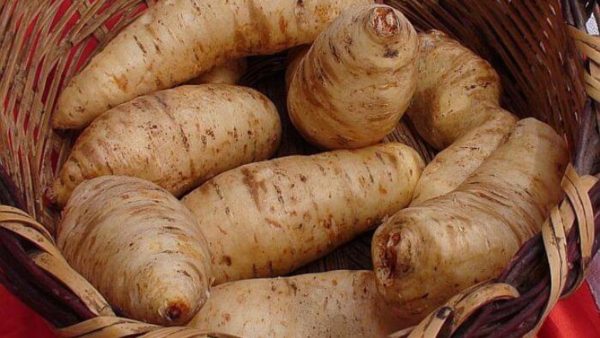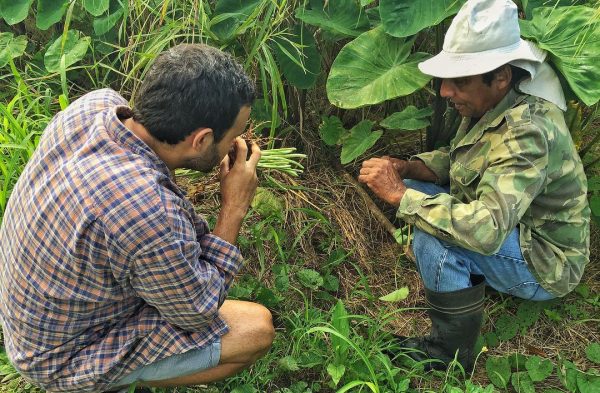Saturday, October 19th, 2019.
In this Daily: Rediscovering Ingredients in Costa Rica
Per land area Costa Rica is among the most densely biodiverse regions on earth, which includes a wide variety of native fruits, vegetables, herbs, and plants some of which can be found nowhere else on the planet. Thanks to over 300 microclimates in the country, each part of Costa Rica had trees, shrubs, plants, and fruits that were hyper specific to the region.
Historically, these local varieties of plants were an integrated part of the Costa Rican diet. Products were limited to what could be grown or bought in the area, which meant each slightly different part of the country had its own unique plant-based ingredients.
The rise of large-scale farming and grocery stores by the late 20th century brought affordable, easily accessible products, but also helped generalize the diet in the country. The fruits and vegetables that could be easily grown, shipped, and produced dominated store shelves and restaurant ingredient lists, which meant there was less need to cultivate, collect, or sell the specific local plants. Many were simply forgotten.
However, in the past decade or so, there has been a push by chefs and local farmers to rediscover and reintroduce these plants, which never really went anywhere, and integrate them back into artisan cuisine.
 Beach Purslane, which can be found in Las Catalinas | PC: Commons
Beach Purslane, which can be found in Las Catalinas | PC: Commons
The Artisanification of Ingredients in Costa Rica
The standardization of production from grocery stores and large-scale farming came with lower cost ingredients and more convenience. The trade-off was that there was less of a need to forage and collect regional ingredients. These trees and plants were still growing strong, but they never made their way to supermarket shelves. As people became conditioned to what was widely available, these products lost popularity in farmers’ markets as well, and many local farmers stopped making the effort to cultivate them.
Recently however, there’s been a push to rediscover these plants. The trees and plants are still thriving and growing just like they had been, but chefs and producers are starting to seek out these regional plants, some of which are endemic to Costa Rica and can’t be found anywhere else in the world. ‘
One such chef is Gilberto Briceño. After his travels to the kitchens of Europe and South America, he wanted to bring to life a cuisine unique to his home country. The ingredients of Costa Rica, especially these endemic local ingredients, are a fundamental piece of that vision, both for their flavor and what they mean to the culinary identity of Costa Rica.
Chef Briceño talks about going to different farmer’s markets and asking for variations on specific ingredients, like the root of the chayote, or the arracacha. In the process, many farmers would often remember old family recipes, like a grandmother’s chayote-root tea, or a cooking sides of ground arracacha.
 Arracacha | PC: Commons
Arracacha | PC: Commons
Briceño and other chefs explore every aspect of Costa Rica’s products included the using flowers, stems, and roots of more well-known vegetables like arracacha and cassava, sourcing fruits like sagú and jabuticaba, and making prominent use of herbs like purslane de playa.
It’s a process that Briceño calls an “artisanification” of ingredients, which he points to as a process happening in many places around the world. As the world grows more connected, and products become easier and cheaper to acquire, there’s been a counter movement towards craft and artisan producers, to recapture local character and quality.
Tasting the Artisanification of Ingredients
Bringing these old ingredients back to prominence is a reflection of this “artisanification” taking place across Costa Rica, as producers and chefs look to bring high-quality regional flavors back to the forefront.
The groceries and restaurants in Las Catalinas have prominent examples. Chef Saul Umaña of Ponciana restaurant utilizes well-studied techniques from his travels to offer a new perspective on regional products and favorites. At the Santarena Hotel you can also find products like Jabuticaba wine, and at Copper & Stone Gourmet Grocery there’s artisan Hacienda Sur beef.
 Chef Briceño at a local Finca
Chef Briceño at a local Finca
Chef Briceño is also constantly in pursuit of new ingredients to add to his cooking, searching the tropical dry forests of Las Catalinas to forage for plants and herbs, and working with local producers to discover new plants he hasn’t tried yet. To try out the results of some of his work, schedule a private dinner with him in Las Catalinas, or join him on a forage and prepare meal out in the tropical dry forest reserve in town.
[maxbutton id="1" url="https://cta-redirect.hubspot.com/cta/redirect/4917861/6178ecf1-435d-470c-9cff-0aa6643611da" text="Book a Meal with Chef Gilberto" ]